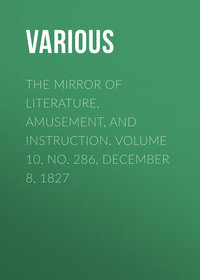Kitabı oku: «The Mirror of Literature, Amusement, and Instruction. Volume 10, No. 286, December 8, 1827», sayfa 4
Various
Bir şeyler ters gitti, lütfen daha sonra tekrar deneyin
Türler ve etiketler
Yaş sınırı:
12+Litres'teki yayın tarihi:
30 eylül 2018Hacim:
52 s. 4 illüstrasyonTelif hakkı:
Public Domain